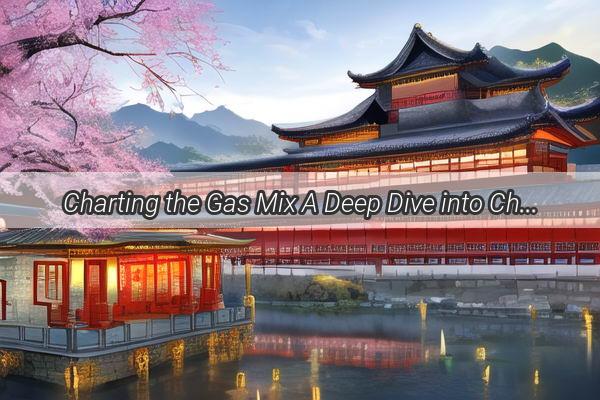Charting the Gas Mix A Deep Dive into Chinas Urban Natural Gas Composition
---
In the heart of China's bustling cities, a silent revolution is taking place beneath the bustling streets. It's a revolution powered by natural gas, a clean and efficient energy source that is reshaping the urban landscape. But what exactly is the composition of this natural gas, and how does it vary across different cities? Let's take a journey into the world of China's urban natural gas and uncover the diverse mix that fuels its growth.
The Composition of Urban Natural Gas: A Spectrum of Sources
China's urban natural gas is not a monolithic entity. It's a complex blend of various hydrocarbon gases, each contributing to the overall energy profile of the nation's cities. The primary components include:
1. Methane: The cornerstone of natural gas, methane is the main constituent of the fuel, providing the bulk of its energy content.
2. Ethane: A byproduct of natural gas processing, ethane is often used as a chemical feedstock in various industries.

3. Propane: Known for its high calorific value, propane is commonly used for heating and cooking in residential settings.
4. Butane: Another component that finds its way into household appliances and industrial processes.
5. Other Gases: This category includes a mix of heavier hydrocarbons and non-hydrocarbons, such as pentane, hexane, and nitrogen, which contribute to the overall composition.
Regional Variations: A Tapestry of Energy Sources
The composition of urban natural gas can vary significantly from one city to another, reflecting the unique geological and industrial characteristics of each region. Here's a glimpse into the diversity of China's urban natural gas mix:
1. Beijing: As the political and cultural heart of China, Beijing relies heavily on natural gas for its energy needs. The city's gas mix is rich in methane, with a notable presence of ethane and propane, catering to both residential and industrial uses.
2. Shanghai: A global financial hub, Shanghai's natural gas composition mirrors its dynamic economy. High methane content is prevalent, with significant quantities of ethane and propane, reflecting the city's robust industrial sector.
3. Guangzhou: In the southern part of China, Guangzhou's natural gas mix is slightly different, with a higher proportion of methane and ethane, indicating a strong focus on petrochemical production.
4. Chengdu: Known for its scenic beauty and spicy cuisine, Chengdu's natural gas mix is rich in methane, with a lesser presence of ethane and propane, suggesting a greater reliance on the fuel for heating and cooking.
The Future of Urban Natural Gas in China
As China continues to urbanize and industrialize, the demand for natural gas is expected to grow. The future of urban natural gas in China will likely see several trends:
1. Increased Investment in Infrastructure: To meet the rising demand, China is investing in pipelines and storage facilities to ensure a stable supply of natural gas to its cities.
2. Technological Advancements: The development of advanced extraction and processing techniques will further refine the composition of natural gas, making it more versatile and efficient.
3. Environmental Considerations: With a growing focus on sustainability, the composition of urban natural gas will likely evolve to include more renewable gases, such as biomethane, to reduce the carbon footprint.
In conclusion, China's urban natural gas is a multifaceted energy source, with a diverse composition that varies across different cities. As the nation continues to grow and evolve, the future of urban natural gas will be shaped by a combination of technological advancements, infrastructure development, and environmental considerations, all working together to power the nation's progress.









